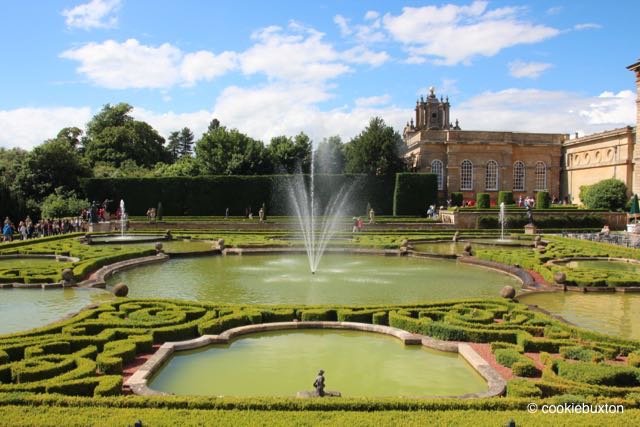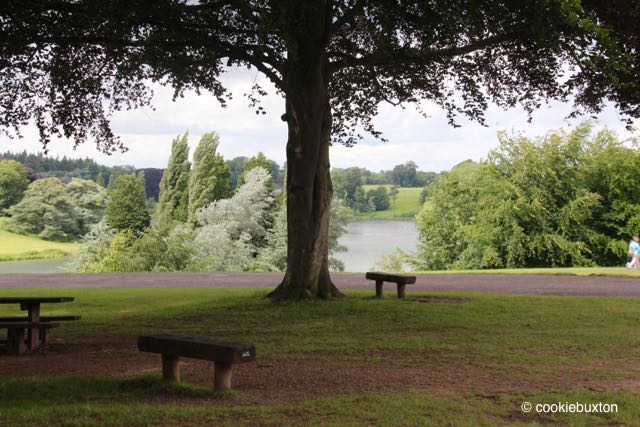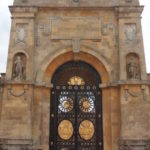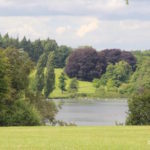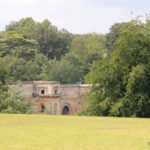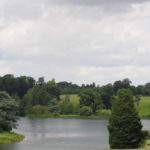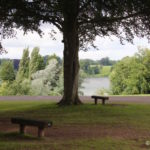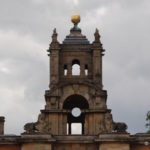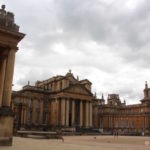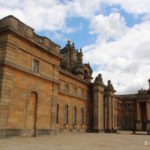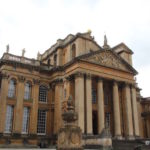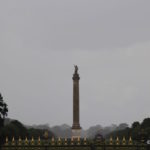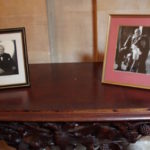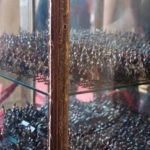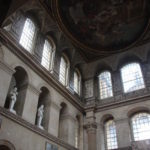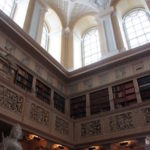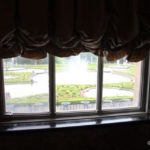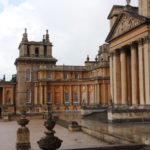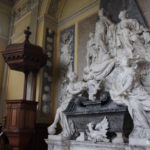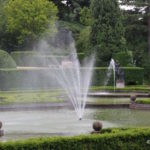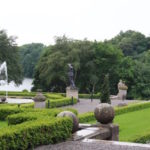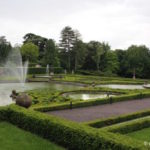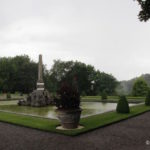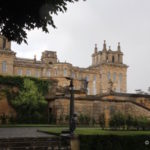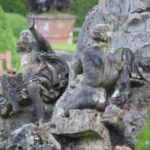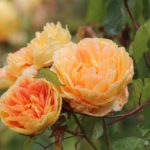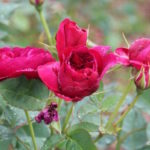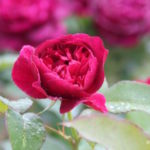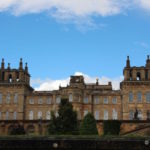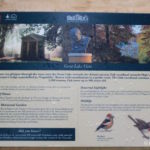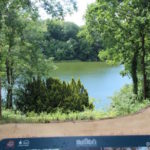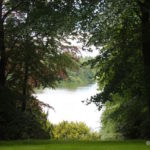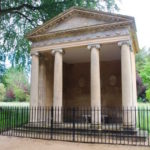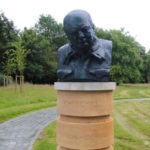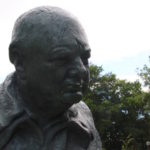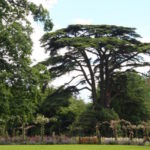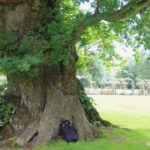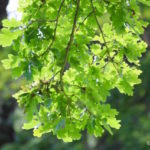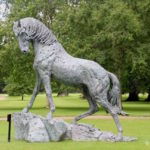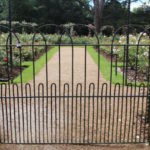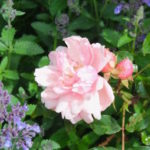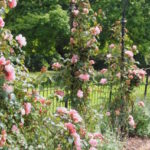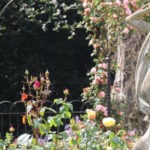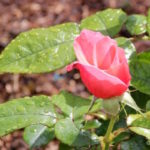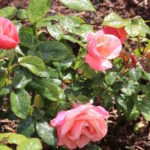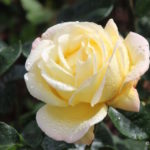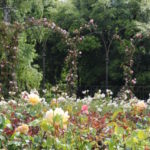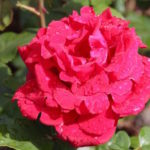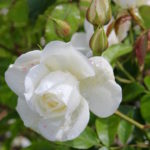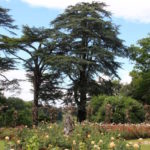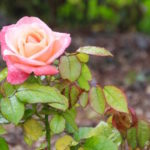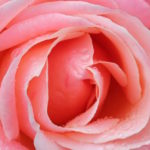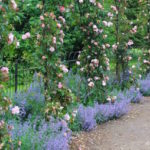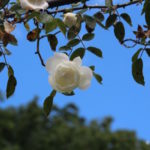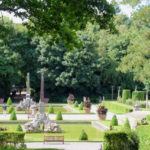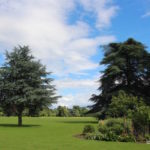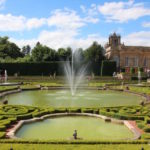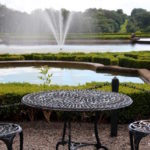Blenheim Palace Gardens, England
Blenheim Palace Gardens
Of places visited on my self-guided tour of British gardens, a favourite for me was Bleinheim Palace, birthplace of Sir Winston Churchill, and Blenheim Palace Gardens and surrounding parklands.
As I left the visitor parking area and was approaching the Palace’s stately East Gate, I was walking near to other visitors. I heard a young lady, probably in her late teens, beside me say to her companion, “Grandmother, who was Winston Churchill?” The older woman looked at the girl with a warm smile, tucked her granddaughter’s arm into hers and said, “Come along, dear, and I’ll tell you all about him.”
Seeing Blenheim Palace (constructed 1705 to c1722) and Gardens was of great interest for me. Over a million Canadians served in World War II, which Canada entered into on September 10, 1939, during Winston Churchill’s period of leadership of the British Government. Living in a Commonwealth nation, several of my own family members fought in or trained to join the Canadian forces. A cousin of my mother and aunt on the Cooke side was a pilot who died during World War II air battles. My father and his brothers, of young age at the end of WWII, trained in the forces in readiness for service. The eldest of the three was a member of the Royal Canadian Air Force and he repaired and serviced military planes. To visit the Marlborough Palace and Winston Churchill’s former home, see a small part of the 2,100-acre grounds surrounding the Palace, and stroll through the new Churchill Memorial tribute gardens, opened recently, was special and memorable for me.
Given the Marlborough family’s early military history and the important political achievements of Winston Churchill personally, the story behind Blenheim Palace is highly documented. Winston was a grandson of the 7th Duke of Marlborough, his own father being one of the younger sons of the Duke. There are many good articles online, such as the one here on Blenheim Palace. This article gives information on Palace and Gardens design and architecture, with historic details through to descriptions of more modern changes to preserve the structures and parklands.
In brief, the Woodstock Park property at Blenheim in Oxfordshire, England, was a gift by the Crown and Parliament to John Spencer, the 1st Duke of Marlborough, in recognition of military successes (including the Battle of Blenheim in 1704) in the War of the Spanish Succession (1702-1714). Interesting to Canadians, prior to his military career, John Churchill was named as governor to Canada’s Hudson’s Bay Company in 1685, 15 years after its incorporation as The Governor and Company of Adventurers of England Trading into Hudson’s Bay.
The Palace was designed for the 1st Duke beginning in c1705 by Sir John Vanbrugh. If you are interested in English Baroque architecture, here is a link to a biography of Vanbrugh. The original design of the Baroque gardens was done by Queen Anne’s Gardener Henry Wise, with the gardens described as being done in an “Anglo-Dutch Baroque manner with a military cast.”
The massively large “triumphal bridge” over what was then a set of small streams of the River Glyme was built by Vanbrugh amidst much argument. There is an interesting article online describing the bridge controversies and it mentions the puzzling inclusion of 30-some-odd rooms inside the bridge, some with fireplaces and chimneys. You can check it out here.
In the 1720s, the River Glyme was channelled into small canals flowing below the bridge and massing into a formal pool to the west.
About Blenheim Palace Gardens
In the mid-19th century, Lancelot (“Capability”) Brown was commissioned and given free rein to transform the grounds. Capability Brown, during his period of revision, aborted the canal scheme and routed the River Glyme to basically flood and flow through the bottom section and rooms of the bridge, with the effect of reducing its unusual height. In doing so, Brown used the river to now form two wider lakes on either side of the bridge, in keeping with his trademark achievement of picturesque “natural” landscapes for which he was famous. He achieved the balanced design seen today, of a handsome bridge bounded on two sides by the lovely Great Lake, to gorgeous effect.
Woods and grounds all came under Brown’s design and influence and took on much of their present appearance. Work by the 5th Duke, who was a horticulturalist himself, further extended the gardens, but his changes are lost to the present period except for the recently restored Rose Garden. You will see images of the restored Rose Garden in the Cookie Buxton Photography Gallery of Blenheim Palace and Gardens, below.
Later significant features in the redesign of the grounds were added by the 9th Duke in the 1930s. This included a “military avenue” east of the palace and water parterres to the west. The 9th Duke arranged for planting over a million trees in Blenheim Park, and he invested significantly in restoration of Palace interiors, including redecoration of the State Rooms.
The park itself is 2,100 acres and includes formal gardens and water parterres, a Memorial Garden as tribute to Winston Churchill, the restored Rose Garden, Pleasure Gardens, and landscaped parklands. Due to heavy rainfall and therefore a shortened tour on the day of my visit, I was not able to take the Blenheim visitor train around the property and did not see the Marlborough Maze, which is described as the second largest yew maze in the world. You can locate images online to view additional attractive features of the park. There is also a Butterfly House and Lavender Garden located near to the Maze.
Next to the Palace itself and closed to the public is the family’s private Italian Garden, redesigned as an initiative of the 9th Duke under the advice of his architect Achille Duchêne. The Italian Garden’s central fountain was lately restored. The three levels of the Water Terraces, which are seen in my photographs, were constructed from 1925-1930. They are described as being similar to the Parterre d’Eau at Versailles. At the Lower Terrace is a scale model of Bernini’s famous Pizza Navona fountain in Rome.
I would certainly return to Blenheim Palace and Gardens again, hopefully earlier in June to see the rose garden at its best. I would enjoy exploring the parklands more thoroughly, relaxing with refreshments beside the Water Terraces, and taking more time to linger inside the Palace. This trip was satisfying enough though, in the time that I had available to me, and I appreciated learning more about historical figures who directly influenced events in Commonwealth as well as British history.
Blenheim Palace was designated as a UNESCO World Heritage Site in 1987. Today, Blenheim Palace is home to the family of the 12th Duke of Marlborough.
Resource: Visit Blenheim Palace online.
Text and Images: Copyright Nadine Kampen / cookiebuxton
Photograph location: Blenheim Palace, Oxfordshire, England (July 2016)
Map: Courtesy of Google Maps
Cookie Buxton Photograph Gallery of Blenheim Palace and Gardens
Click on any image to enlarge for viewing. Click again on the image to advance the series in large format.
- Stately east gate at Blenheim Palace
- Blenheim Palace Park’s Great Lake
- Grand Bridge over Blenheim Palace Park’s Great Lake
- Great Lake at Blenheim Palace Park
- View of Blenheim Palace Park’s Great Lake
- Architecture at Blenheim Palace
- English Baroque Architecture of Blenheim Palace
- Blenheim Palace
- Blenheim Palace
- Column of Victory at Blenheim Palace
- Winston Churchill photographs
- Winston Churchill’s toy soldiers
- Inside Blenheim Palace
- Blenheim Palace Library
- View of Upper Water Terrace from inside Blenheim Palace
- Pillars of Blenheim Palace front entrance
- Tomb of the 1st Duke of Marlborough inside Blenheim Palace Chapel
- Water Terrace fountains at Blenheim Palace
- Water Terraces at Blenheim Palace
- Blenheim Palace Upper Water Terrace
- Blenheim Palace Lower Water Terrace with scale model of Bernini’s river-god fountain
- Rainy Day at Blenheim Palace, seen from the Lower Terrace
- Fountain statue at Blenheim Palace
- Roses from garden at Blenheim Palace
- Rose from Blenheim Palace rose garden
- Rose from Blenheim Palace rose garden
- View of Blenheim Palace from Lower Terrace
- View near Temple of Diana
- View opposite Temple of Diana at Blenheim Palace Park
- Temple of Diana at Blenheim Palace, where in 1908 Winston Churchill proposed to wife Clementine
- Winston Churchill bust in Blenheim Palace memorial garden
- Close-up of Winston Churchill bust in Blenheim Palace Memorial Garden
- View of Rose Garden at Blenheim Palace
- Oak tree on grounds of Blenheim Palace
- Oak leaves
- Hamish Mackie’s Andalusian Stallion sculpture displayed at Blenheim Palace
- Garden gate at Blenheim Palace Rose Garden
- Pink rose
- Pink climbing roses on Blenheim Rose Garden trellises
- Blenheim Palace Rose Garden statuary
- Pink rose
- Roses after the rain
- Yellow rose with raindrops
- Adjoining trellises in Blenheim Palace Rose Garden
- Deep pink rose
- White rose in July in the Bleinheim Rose Garden
- Inside the Blenheim Palace Rose Garden
- Pink rose at Blenheim Rose Garden
- Close-up of raindrops on pink rose
- Climbing pink roses at Blenheim Palace Rose Garden
- White rose
- Lower Terrace Gardens at Blenheim Palace
- Parklands at Blenheim Palace
- Water Terrace Gardens at Blenheim Palace Garden
- Blenheim Palace Garden Outdoor Cafe
